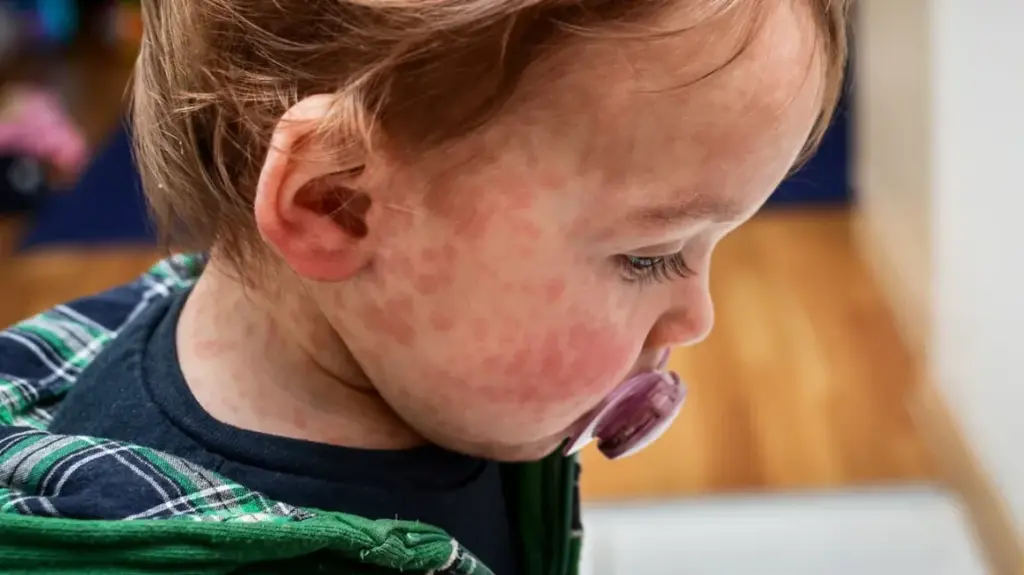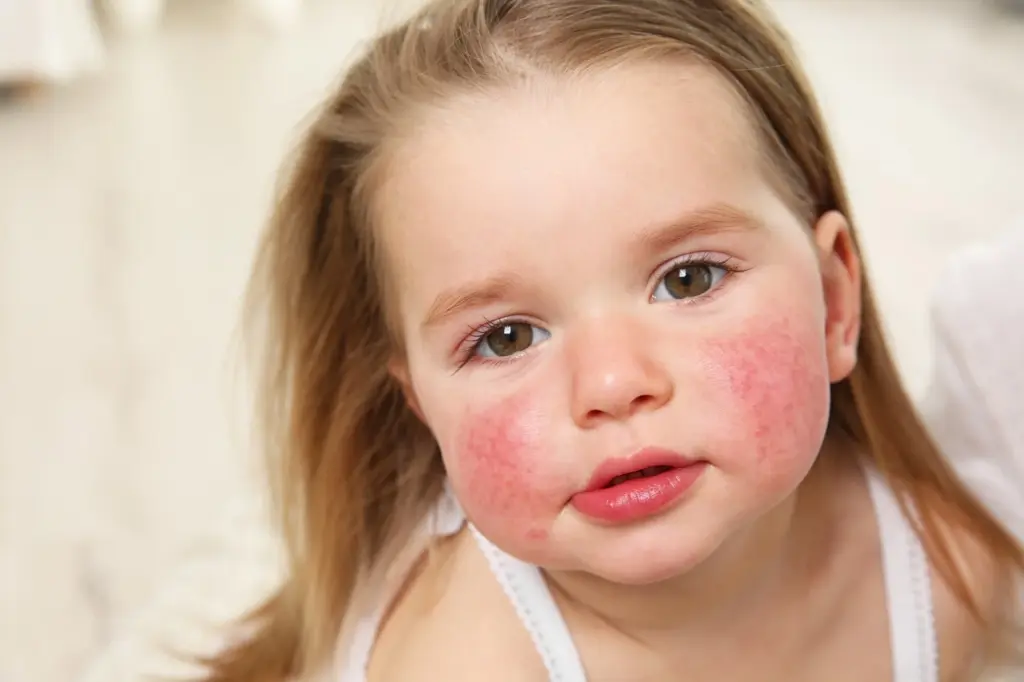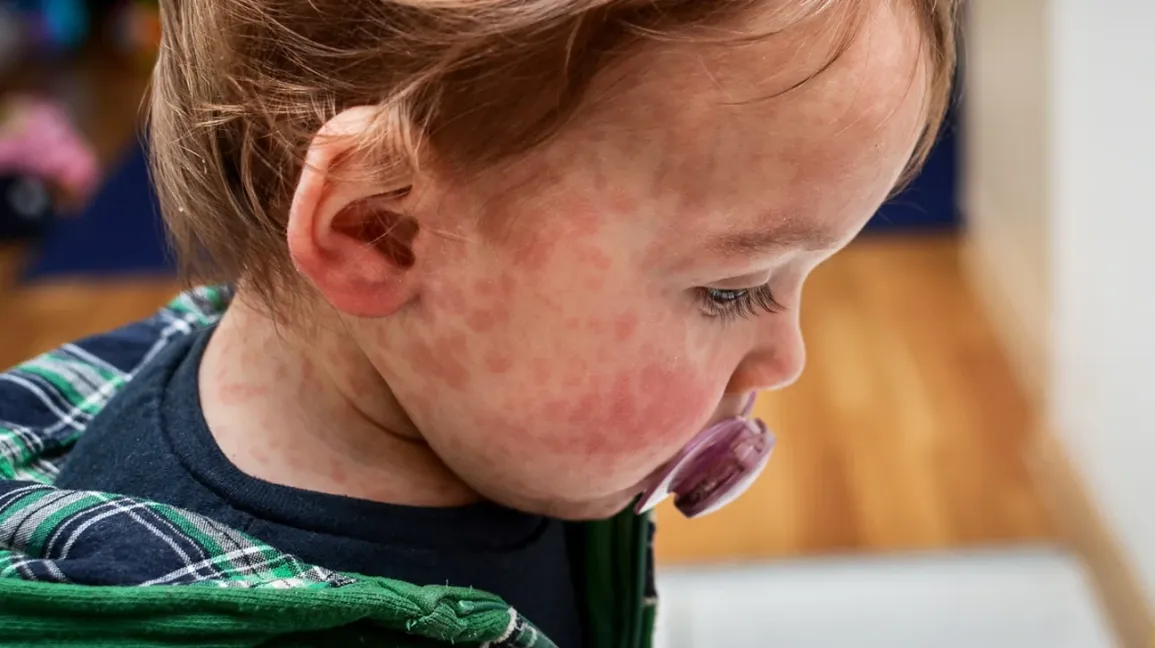Importance of Recognizing and Managing Food Allergies
Recognizing and managing food allergies in babies is critical for ensuring their safety and well-being. Food allergies can range from mild to severe, and understanding how to identify and handle them is essential for parents and caregivers. Proper management helps prevent allergic reactions and ensures that your child gets the nutrition they need without unnecessary risks.
Overview of the Article
This article provides a comprehensive guide to understanding and managing baby food allergies. We will cover the basics of food allergies, common allergens, symptoms, diagnosis, and management strategies. Additionally, we will explore how to introduce solid foods safely, the role of breastfeeding and formula feeding, emergency management, and emotional support for your child. By the end of this article, you will have a thorough understanding of how to navigate the challenges of food allergies and ensure your baby’s health and happiness.
Brief Explanation of Food Allergies in Babies
Food allergies occur when the immune system mistakenly identifies a harmless food protein as a threat and reacts against it. This can cause a range of symptoms, from mild discomfort to severe, life-threatening reactions. Babies can develop food allergies even if they have been consuming the allergen without issues previously. It’s important to be vigilant and proactive in identifying and managing these allergies.
Understanding Food Allergies
What is a Food Allergy?
A food allergy is an abnormal immune response to a specific food protein. When a baby with a food allergy consumes the allergen, their immune system releases chemicals like histamine, which cause allergy symptoms. This response can affect various parts of the body, including the skin, digestive system, respiratory system, and cardiovascular system.
How Food Allergies Develop
Food allergies can develop when a baby’s immune system is exposed to an allergen and mistakenly identifies it as harmful. This can happen through direct consumption, breastfeeding, or even skin contact. Genetics also play a role; babies with a family history of allergies, asthma, or eczema are more likely to develop food allergies.
Difference Between Food Allergies and Food Intolerances
It’s important to distinguish between food allergies and food intolerances. Food allergies involve the immune system and can cause severe reactions, while food intolerances involve the digestive system and usually cause less serious symptoms, such as gas, bloating, or diarrhea. Lactose intolerance, for example, is a common food intolerance but is not an immune response like a food allergy.
Common Food Allergens
Milk and Dairy Products
Milk and dairy products are among the most common allergens for babies. Cow’s milk protein allergy can cause symptoms like hives, vomiting, and diarrhea. It’s essential to identify and manage this allergy early, as milk is a common ingredient in many baby foods and formulas.
Eggs
Egg allergies are common in young children. Both the egg white and yolk can trigger allergic reactions, but the white is more likely to cause problems. Symptoms can range from mild skin reactions to severe anaphylaxis.
Peanuts and Tree Nuts
Peanut and tree nut allergies are serious and can cause severe reactions, even in small amounts. These allergies are often lifelong and require strict avoidance of the allergen. It’s important to read labels carefully and be aware of potential cross-contamination.
Wheat
Wheat allergies can cause a range of symptoms, including digestive issues and skin reactions. It’s different from celiac disease, which is an autoimmune disorder triggered by gluten. Managing a wheat allergy involves avoiding wheat and wheat-containing products.
Soy
Soy is a common allergen found in many processed foods, including baby formulas. Symptoms of a soy allergy can include hives, stomach pain, and respiratory issues. It’s important to find alternative sources of protein and nutrients if your baby has a soy allergy.
Fish and Shellfish
Fish and shellfish allergies can cause severe reactions and are often lifelong. These allergies are less common in babies but can occur. Symptoms can include hives, vomiting, and anaphylaxis. It’s important to avoid all forms of fish and shellfish if an allergy is suspected.
Symptoms of Food Allergies
Mild to Moderate Symptoms
Mild to moderate symptoms of food allergies can include:
- Hives or a rash
- Itching
- Swelling of the lips, face, or eyes
- Stomach pain or cramps
- Nausea or vomiting
- Diarrhea
These symptoms can occur within minutes to a few hours after consuming the allergen.
Severe Symptoms and Anaphylaxis
Severe symptoms, such as anaphylaxis, require immediate medical attention. Symptoms of anaphylaxis can include:
- Difficulty breathing or wheezing
- Swelling of the throat
- Rapid or weak pulse
- Severe drop in blood pressure
- Loss of consciousness
Anaphylaxis is a medical emergency, and an epinephrine auto-injector should be used immediately if available.
Timing of Symptoms After Eating
The timing of allergy symptoms can vary. Some symptoms appear immediately after eating the allergen, while others may take several hours to develop. Keeping track of when symptoms occur relative to eating can help in diagnosing and managing food allergies.
Diagnosing Food Allergies
Keeping a Food Diary
Keeping a detailed food diary can help identify potential allergens. Record everything your baby eats and any symptoms they experience. This information can be invaluable for healthcare providers in diagnosing food allergies.
Elimination Diets
An elimination diet involves removing suspected allergens from your baby’s diet and then reintroducing them one at a time to see if symptoms recur. This method should be done under the supervision of a healthcare provider to ensure nutritional needs are met.
Skin Prick Tests
Skin prick tests involve placing a small amount of the allergen on the skin and then pricking the skin to allow the allergen to enter. If an allergy is present, a small raised bump will appear at the test site. This test is typically performed by an allergist.
Blood Tests
Blood tests can measure the presence of specific antibodies to allergens in your baby’s blood. These tests can help confirm a suspected food allergy and guide management strategies.
Oral Food Challenges
Oral food challenges involve feeding the suspected allergen to your baby in a controlled medical setting. This test can provide a definitive diagnosis and is usually performed if other tests are inconclusive.

Managing Food Allergies
Avoiding Allergen Exposure
The primary strategy for managing food allergies is to avoid exposure to the allergen. This involves careful reading of food labels, understanding ingredient lists, and being aware of potential cross-contamination.
Reading Food Labels
Reading food labels is crucial for avoiding allergens. Look for specific allergen warnings and familiarize yourself with alternative names for common allergens. Be vigilant about checking labels for all foods and beverages.
Safe Food Preparation Practices
Safe food preparation practices include using separate utensils and cookware for allergen-free foods, thoroughly cleaning surfaces, and avoiding cross-contact with allergens. This helps prevent accidental exposure.
Cross-Contamination Prevention
Preventing cross-contamination involves keeping allergen-containing foods separate from allergen-free foods, using dedicated kitchen equipment, and washing hands thoroughly after handling allergens.
Introducing Solid Foods
Guidelines for Introducing Allergenic Foods
Introduce allergenic foods early and gradually, one at a time, to monitor for reactions. Current guidelines suggest starting as early as 4-6 months, but it’s important to consult with your pediatrician.
Recommended Age for Introduction
The recommended age for introducing solid foods, including allergens, is typically around 6 months. Each baby is different, so follow your pediatrician’s advice based on your baby’s development and readiness.
Signs of Readiness for Solid Foods
Signs that your baby is ready for solid foods include:
- Sitting up with minimal support
- Showing interest in food
- Loss of the tongue-thrust reflex
- Ability to move food to the back of the mouth and swallow
Introducing Foods One at a Time
Introduce new foods one at a time, waiting 3-5 days between each new food. This allows you to identify any allergic reactions and determine which food may be causing them.
Breastfeeding and Food Allergies
Benefits of Breastfeeding
Breastfeeding has many benefits, including reducing the risk of developing food allergies. Breast milk contains antibodies and other immune-boosting factors that can help protect against allergies.
Dietary Considerations for Breastfeeding Mothers
Breastfeeding mothers should be mindful of their diet if their baby has a known allergy. Allergens can pass through breast milk, so avoiding known allergens can help prevent reactions.
Introducing Allergenic Foods While Breastfeeding
Introducing allergenic foods while breastfeeding may help reduce the risk of developing food allergies. Consult with your pediatrician before introducing allergenic foods to ensure it is done safely.
Formula Feeding and Food Allergies
Choosing the Right Formula
Choosing the right formula is important for babies with food allergies. Hypoallergenic or hydrolyzed formulas can help reduce the risk of allergic reactions.
Hypoallergenic and Hydrolyzed Formulas
Hypoallergenic formulas are designed for babies with allergies and are less likely to cause reactions. Hydrolyzed formulas have proteins that are broken down into smaller, less allergenic pieces.
Managing Allergies with Formula Feeding
If your baby has a known food allergy, work with your pediatrician to choose the right formula and ensure proper nutrition. Monitor for any signs of allergic reactions and adjust the formula if needed.
Emergency Management of Severe Allergies
Recognizing Anaphylaxis
Recognizing the signs of anaphylaxis is crucial for timely intervention. Symptoms include difficulty breathing, swelling of the throat, and a severe drop in blood pressure.
Using an Epinephrine Auto-Injector
An epinephrine auto-injector is a life-saving device for severe allergic reactions. Learn how to use it properly and carry it with you at all times if your baby has a severe allergy.
Emergency Action Plan
Develop an emergency action plan with your pediatrician. This plan should include steps to take in case of a severe allergic reaction, including when to use an epinephrine auto-injector and when to seek medical help.
When to Seek Medical Help
Seek medical help immediately if your baby shows signs of anaphylaxis or a severe allergic reaction. Even if symptoms improve after using an epinephrine auto-injector, it is important to get medical attention.
Working with Healthcare Providers
Role of Pediatricians and Allergists
Pediatricians and allergists play a crucial role in diagnosing and managing food allergies. Regular check-ups and open communication with healthcare providers are essential for effective allergy management.
Regular Check-Ups and Monitoring
Regular check-ups help monitor your baby’s growth and development and ensure their dietary needs are being met. Discuss any concerns or changes in your baby’s condition with your healthcare provider.
Allergy Testing and Follow-Up
Allergy testing and follow-up appointments with an allergist help track your baby’s progress and make necessary adjustments to their management plan.
Supporting Your Child Emotionally
Educating Your Child About Their Allergy
As your child grows, educate them about their allergy in an age-appropriate way. Teach them to recognize symptoms, avoid allergens, and communicate their needs to others.
Building Confidence in Self-Management
Encourage your child to take an active role in managing their allergy. Build their confidence by involving them in food choices, teaching them to read labels, and practicing safe habits.
Dealing with Social Situations and Peer Pressure
Prepare your child for social situations where allergens may be present. Role-play scenarios and teach them how to handle peer pressure and communicate their allergy to others.
Dealing with Food Allergies in Daycare and School
Communicating with Caregivers and Teachers
Communicate openly with caregivers and teachers about your child’s allergy. Provide detailed information and instructions on how to manage the allergy and what to do in case of an emergency.
Developing an Allergy Action Plan
Develop an allergy action plan for daycare or school settings. Ensure all caregivers and teachers are familiar with the plan and know how to recognize and respond to allergic reactions.
Safe Snack and Meal Practices
Implement safe snack and meal practices at daycare or school. Provide allergen-free snacks and meals for your child, and educate caregivers and teachers about safe food handling and cross-contamination prevention.

Traveling with a Baby with Food Allergies
Preparing for Travel
Prepare for travel by researching your destination and identifying safe food options. Pack allergen-free snacks and meals, and carry necessary medications and an emergency action plan.
Managing Food Allergies on the Go
Managing food allergies on the go involves being vigilant about food choices and potential allergen exposure. Communicate your baby’s allergy to restaurant staff and be prepared with safe food alternatives.
Finding Safe Food Options
Finding safe food options while traveling can be challenging. Look for restaurants and stores that cater to food allergies, and consider staying in accommodations with kitchen facilities to prepare your own meals.
Dietary Management and Nutrition
Ensuring Nutritional Balance
Ensuring your baby gets a balanced diet is important for their growth and development. Work with a dietitian to create a nutritionally complete meal plan that avoids allergens.
Finding Alternatives to Common Allergens
Finding alternatives to common allergens involves exploring a variety of foods that provide similar nutrients. For example, if your baby is allergic to milk, consider fortified plant-based milk alternatives.
Working with a Dietitian
Working with a dietitian can help you create a safe and balanced diet for your baby. A dietitian can provide personalized recommendations and support for managing food allergies.
Case Studies and Real-Life Examples
Stories from Parents of Allergic Children
Hearing stories from other parents of allergic children can provide practical insights and reassurance. These real-life examples highlight various approaches to managing food allergies.
Professional Insights from Allergists
Professional insights from allergists offer expert advice on best practices for managing food allergies and addressing common concerns.
Successful Strategies for Managing Allergies
Exploring successful strategies for managing allergies helps you learn effective methods to overcome obstacles and ensure your baby is well-nourished and safe.
Myths and Misconceptions About Food Allergies
Common Myths
There are many myths about food allergies, such as “food allergies are not serious” or “you can outgrow all food allergies.” It’s important to debunk these myths and rely on accurate information.
Clarifying Misconceptions
Clarifying misconceptions about food allergies helps ensure proper management and reduces unnecessary anxiety. Educate yourself and others about the realities of living with food allergies.
Reliable Sources of Information
Rely on reliable sources of information, such as healthcare providers, reputable websites, and allergy organizations, for accurate and up-to-date information about food allergies.
Psychological Impact on Parents
Managing Anxiety and Stress
Managing anxiety and stress related to your baby’s food allergies is important for your well-being. Practice self-care, seek support, and consider professional help if needed.
Building a Support System
Building a support system involves connecting with other parents, joining support groups, and relying on family and friends. A strong support system provides emotional and practical assistance.
Seeking Professional Help if Needed
Seeking professional help, such as counseling or therapy, can be beneficial if you are struggling with the psychological impact of managing your baby’s food allergies.
Recent Advances in Food Allergy Research
Latest Research Findings
Stay informed about the latest research findings in food allergy management. Advances in understanding the causes and treatment of food allergies can lead to improved management strategies.
New Treatments and Therapies
New treatments and therapies, such as oral immunotherapy, are being developed to help manage food allergies. Discuss these options with your healthcare provider to determine if they are appropriate for your baby.
Future Directions in Food Allergy Management
Future directions in food allergy management include ongoing research, new diagnostic tools, and innovative treatments. Stay informed about these developments to provide the best care for your baby.
Benefits of Proper Food Allergy Management
Improved Quality of Life for Your Child
Proper management of food allergies improves your child’s quality of life by reducing the risk of allergic reactions and ensuring they can participate in various activities safely.
Reduced Risk of Severe Reactions
Effective management strategies reduce the risk of severe allergic reactions, providing peace of mind for parents and caregivers.
Peace of Mind for Parents
Knowing how to manage your baby’s food allergies effectively gives parents peace of mind and confidence in keeping their child safe and healthy.










